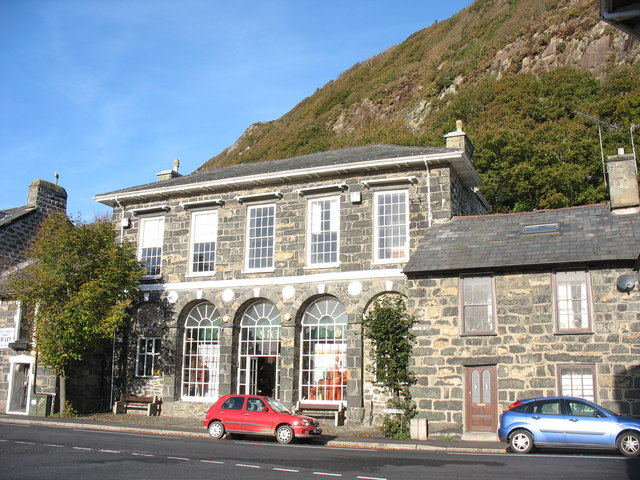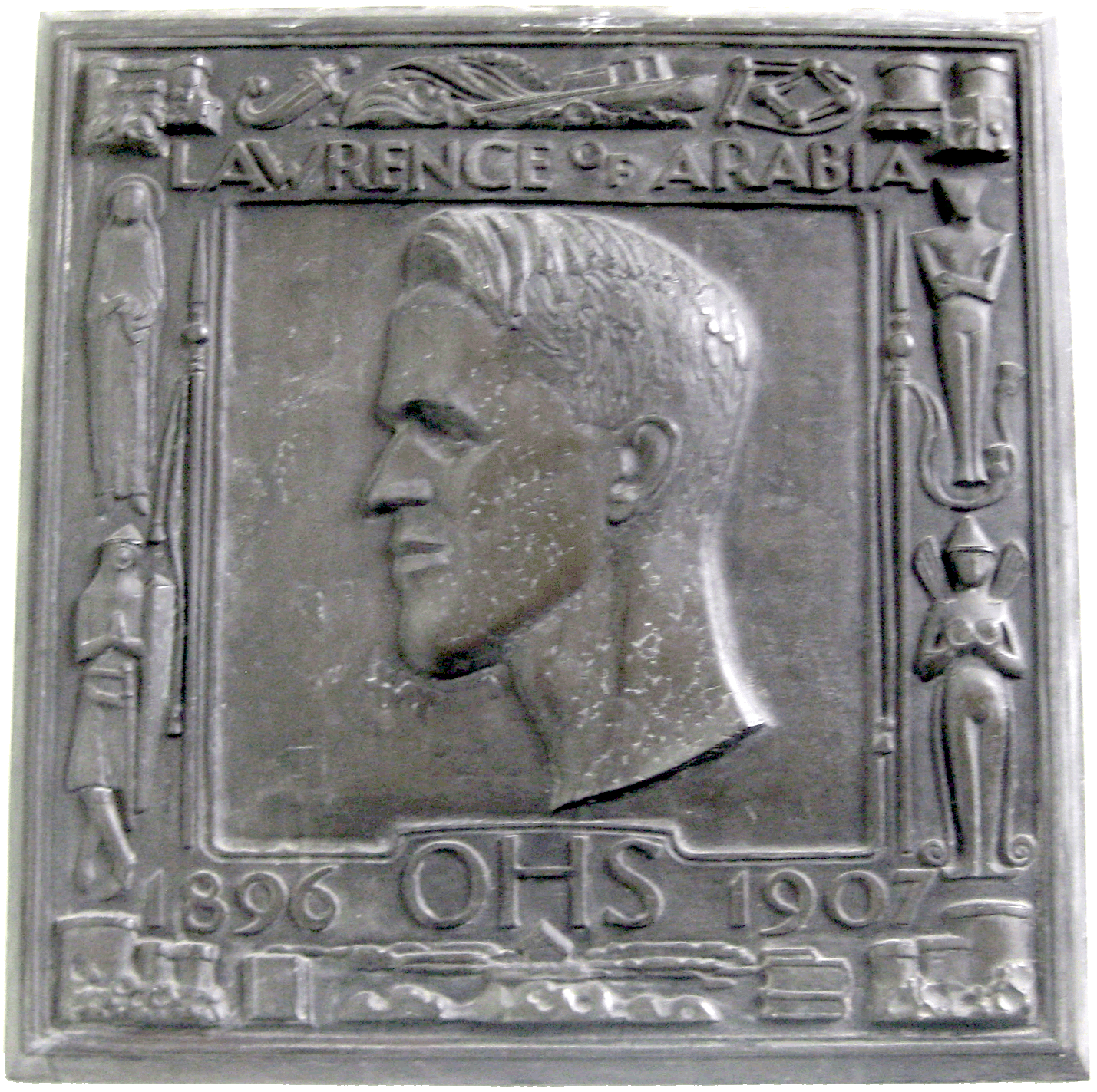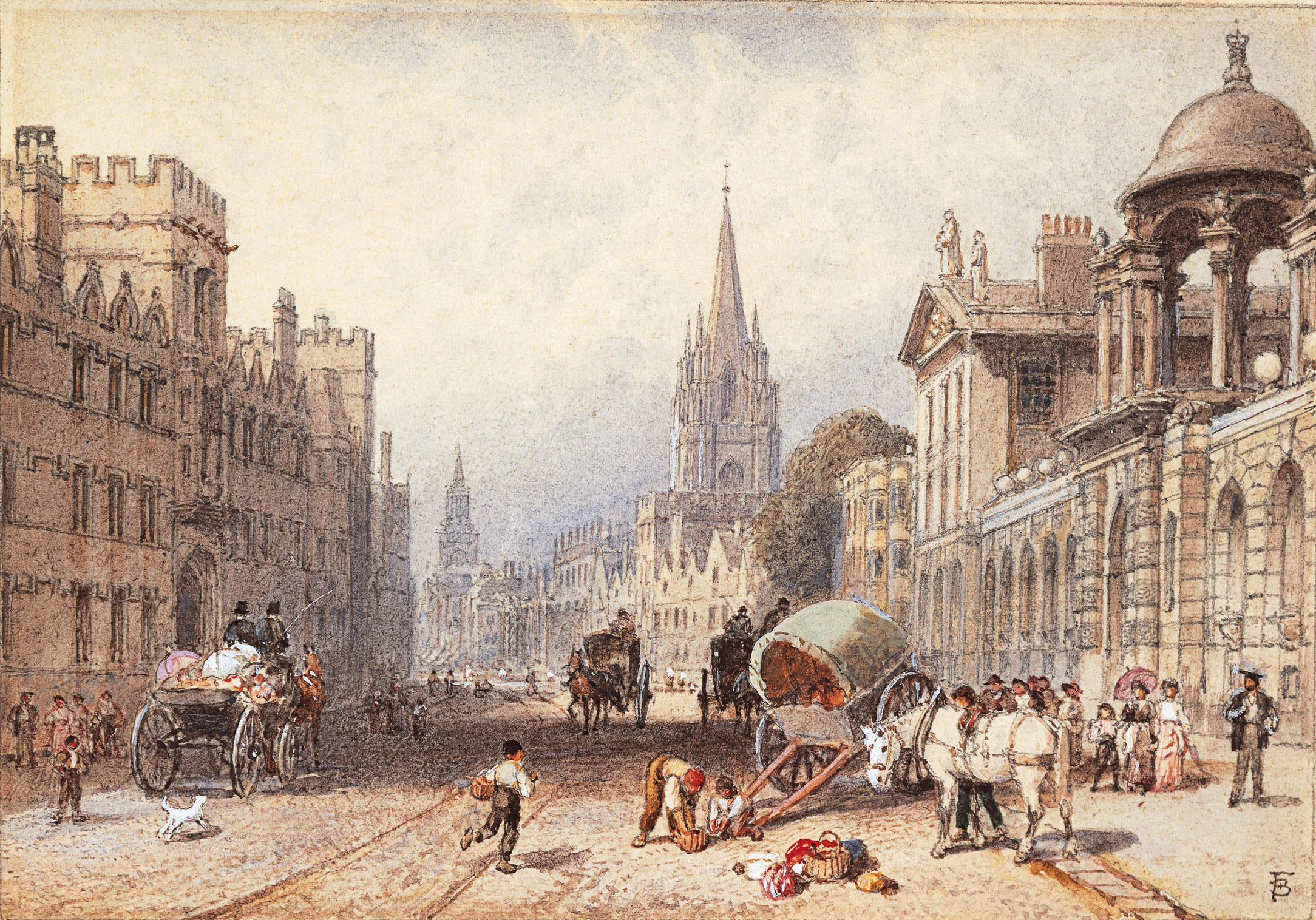|
T. E. Lawrence
Thomas Edward Lawrence (16 August 1888 – 19 May 1935) was a British archaeologist, army officer, diplomat, and writer who became renowned for his role in the Arab Revolt (1916–1918) and the Sinai and Palestine Campaign (1915–1918) against the Ottoman Empire during the First World War. The breadth and variety of his activities and associations, and his ability to describe them vividly in writing, earned him international fame as Lawrence of Arabia, a title used for the 1962 film based on his wartime activities. He was born out of wedlock in August 1888 to Sarah Junner (1861–1959), a governess, and Sir Thomas Chapman, 7th Baronet (1846–1919), an Anglo-Irish nobleman. Chapman left his wife and family in Ireland to cohabit with Junner. Chapman and Junner called themselves Mr and Mrs Lawrence, using the surname of Sarah's likely father; her mother had been employed as a servant for a Lawrence family when she became pregnant with Sarah. In 1896, the Lawrences m ... [...More Info...] [...Related Items...] OR: [Wikipedia] [Google] [Baidu] |
Carchemish
Carchemish (Turkish: ''Karkamış''; or ), also spelled Karkemish ( hit, ; Hieroglyphic Luwian: , /; Akkadian: ; Egyptian: ; Hebrew: ) was an important ancient capital in the northern part of the region of Syria. At times during its history the city was independent, but it was also part of the Mitanni, Hittite and Neo-Assyrian Empires. Today it is on the frontier between Turkey and Syria. It was the location of an important battle, about 605 BC, between the Babylonians and Egyptians, mentioned in the Bible (Jer. 46:2). Modern neighbouring cities are Karkamış in Turkey and Jarabulus in Syria (also Djerablus, Jerablus, Jarablos, Jarâblos); the original form of the modern toponym seems to have been Djerabis or Jerabis, likely derived from Europos, the ancient name of the Hellenistic-Roman settlement. Geography of the site Carchemish is now an extensive set of ruins (90 hectares, of which 55 lie in Turkey and 35 in Syria), located on the West bank of Euphrat ... [...More Info...] [...Related Items...] OR: [Wikipedia] [Google] [Baidu] |
Tremadog
Tremadog (formerly Tremadoc) is a village in the community of Porthmadog, in Gwynedd, north west Wales; about north of Porthmadog town-centre. It was a planned settlement, founded by William Madocks, who bought the land in 1798. The centre of Tremadog was complete by 1811 and remains substantially unaltered. Tremadog hosted an unofficial National Eisteddfod event in 1872. Planning By mid-1805, Madocks had already built some houses on the site of Tremadog, for he wrote to the Post-Master at Caernarfon informing him that letters addressed to Pentre-Gwaelod should be delivered to the new houses he had built on Traeth Mawr, near Tan-yr-Allt. Pentre-Gwaelod translates as Bottom Village, but Madocks had grander plans, for aldermen and a mayor had been appointed, and he corrected the word "village" in a letter written soon afterwards to read "borough". He planned it himself, perhaps with some help from architectural friends and architectural books, but his letters reveal that ... [...More Info...] [...Related Items...] OR: [Wikipedia] [Google] [Baidu] |
Archaeology
Archaeology or archeology is the scientific study of human activity through the recovery and analysis of material culture. The archaeological record consists of Artifact (archaeology), artifacts, architecture, biofact (archaeology), biofacts or ecofacts, archaeological site, sites, and cultural landscapes. Archaeology can be considered both a social science and a branch of the humanities. It is usually considered an independent academic discipline, but may also be classified as part of anthropology (in North America – the four-field approach), history or geography. Archaeologists study human prehistory and history, from the development of the first stone tools at Lomekwi in East Africa 3.3 million years ago up until recent decades. Archaeology is distinct from palaeontology, which is the study of fossil remains. Archaeology is particularly important for learning about prehistoric societies, for which, by definition, there are no written records. Prehistory includes ove ... [...More Info...] [...Related Items...] OR: [Wikipedia] [Google] [Baidu] |
Ottoman Syria
Ottoman Syria ( ar, سوريا العثمانية) refers to divisions of the Ottoman Empire within the region of Syria, usually defined as being east of the Mediterranean Sea, west of the Euphrates River, north of the Arabian Desert and south of the Taurus Mountains. Ottoman Syria became organized by the Ottomans upon conquest from the Mamluk Sultanate in the early 16th century as a single eyalet (province) of Damascus Eyalet. In 1534, the Aleppo Eyalet was split into a separate administration. The Tripoli Eyalet was formed out of Damascus province in 1579 and later the Adana Eyalet was split from Aleppo. In 1660, the Eyalet of Safed was established and shortly afterwards renamed Sidon Eyalet; in 1667, the Mount Lebanon Emirate was given special autonomous status within the Sidon province, but was abolished in 1841 and reconfigured in 1861 as the Mount Lebanon Mutasarrifate. The Syrian eyalets were later transformed into the Syria Vilayet, the Aleppo Vilayet and t ... [...More Info...] [...Related Items...] OR: [Wikipedia] [Google] [Baidu] |
British Museum
The British Museum is a public museum dedicated to human history, art and culture located in the Bloomsbury area of London. Its permanent collection of eight million works is among the largest and most comprehensive in existence. It documents the story of human culture from its beginnings to the present.Among the national museums in London, sculpture and decorative and applied art are in the Victoria and Albert Museum; the British Museum houses earlier art, non-Western art, prints and drawings. The National Gallery holds the national collection of Western European art to about 1900, while art of the 20th century on is at Tate Modern. Tate Britain holds British Art from 1500 onwards. Books, manuscripts and many works on paper are in the British Library. There are significant overlaps between the coverage of the various collections. The British Museum was the first public national museum to cover all fields of knowledge. The museum was established in 1753, largely ... [...More Info...] [...Related Items...] OR: [Wikipedia] [Google] [Baidu] |
City Of Oxford High School For Boys
The City of Oxford High School for Boys (a.k.a. Oxford High School for Boys and City of Oxford School) was founded in 1881 by Thomas Hill Green to provide Oxford boys with an education which would enable them to prepare for University. History It was administered by the City of Oxford Education Committee, with around 400 boys enrolled. The school finally closed in 1966, when it was combined with what was then Southfield Grammar School to form a grammar school, known as Oxford School at that time (the present Oxford Spires Academy). The building The Victorian stone building, bearing the arms of both the City and University, was designed by Sir Thomas Jackson in Oxford, England, and still stands at the corner of George Street and New Inn Hall Street. Additional classrooms were later added in the playground, a space that was contained on the south side by an extensive length of the city's mediaeval wall. The school remained here until 1966, when it moved to the Southfield Gra ... [...More Info...] [...Related Items...] OR: [Wikipedia] [Google] [Baidu] |
Oxford
Oxford () is a city in England. It is the county town and only city of Oxfordshire. In 2020, its population was estimated at 151,584. It is north-west of London, south-east of Birmingham and north-east of Bristol. The city is home to the University of Oxford, the List of oldest universities in continuous operation, oldest university in the English-speaking world; it has buildings in every style of Architecture of England, English architecture since late History of Anglo-Saxon England, Anglo-Saxon. Oxford's industries include motor manufacturing, education, publishing, information technology and science. History The history of Oxford in England dates back to its original settlement in the History of Anglo-Saxon England, Saxon period. Originally of strategic significance due to its controlling location on the upper reaches of the River Thames at its junction with the River Cherwell, the town grew in national importance during the early Norman dynasty, Norman period, and in ... [...More Info...] [...Related Items...] OR: [Wikipedia] [Google] [Baidu] |
Anglo-Irish
Anglo-Irish people () denotes an ethnic, social and religious grouping who are mostly the descendants and successors of the English Protestant Ascendancy in Ireland. They mostly belong to the Anglican Church of Ireland, which was the established church of Ireland until 1871, or to a lesser extent one of the English dissenting churches, such as the Methodist church, though some were Roman Catholics. They often defined themselves as simply "British", and less frequently "Anglo-Irish", "Irish" or "English". Many became eminent as administrators in the British Empire and as senior army and naval officers since Kingdom of England and Great Britain were in a real union with the Kingdom of Ireland until 1800, before politically uniting into the United Kingdom of Great Britain and Ireland) for over a century. The term is not usually applied to Presbyterians in the province of Ulster, whose ancestry is mostly Lowland Scottish, rather than English or Irish, and who are sometim ... [...More Info...] [...Related Items...] OR: [Wikipedia] [Google] [Baidu] |
Sir Thomas Chapman, 7th Baronet
Sir Thomas Robert Tighe Chapman, 7th Baronet (6 November 1846 – 8 April 1919), was an Anglo-Irish landowner, the last of the Chapman baronets of Killua Castle in County Westmeath, Ireland. For many years he lived under the name of Thomas Robert Lawrence, taking the name of his partner, Sarah Lawrence, the mother of his five sons, one of whom was T. E. Lawrence, 'Lawrence of Arabia'.Lawrence, Arnold Walter at arthistorians.info, accessed 17 August 2008 Early life and background Thomas Chapman was born in 1846, the second of the three sons of William Chapman (1811–1889) and his wife Louisa, daughter of Arthur Vansittart (1775–1829), of[...More Info...] [...Related Items...] OR: [Wikipedia] [Google] [Baidu] |
Legitimacy (family Law)
Legitimacy, in traditional Western common law, is the status of a child born to parents who are legally married to each other, and of a child conceived before the parents obtain a legal divorce. Conversely, ''illegitimacy'', also known as ''bastardy'', has been the status of a child born outside marriage, such a child being known as a bastard, a love child, a natural child, or illegitimate. In Scots law, the terms natural son and natural daughter bear the same implications. The importance of legitimacy has decreased substantially in Western countries since the sexual revolution of the 1960s and 1970s and the declining influence of conservative Christian churches in family and social life. Births outside marriage now represent a large majority in many countries of Western Europe and the Americas, as well as in many former European colonies. In many Western-influenced cultures, stigma based on parents' marital status, and use of the word ''bastard'', are now widely consider ... [...More Info...] [...Related Items...] OR: [Wikipedia] [Google] [Baidu] |
Lawrence Of Arabia (film)
''Lawrence of Arabia'' is a 1962 British Epic film, epic historical drama film based on the life of T. E. Lawrence and his 1926 book ''Seven Pillars of Wisdom''. It was directed by David Lean and produced by Sam Spiegel, through his British company Horizon Pictures and distributed by Columbia Pictures. The film stars Peter O'Toole as Lawrence with Alec Guinness playing Faisal I of Iraq, Prince Faisal. The film also stars Jack Hawkins, Anthony Quinn, Omar Sharif, Anthony Quayle, Claude Rains and Arthur Kennedy. The screenplay was written by Robert Bolt and Michael Wilson (writer), Michael Wilson. The film depicts Lawrence's experiences in the Ottoman Empire, Ottoman provinces of Hejaz Vilayet, Hejaz and Syria (region), Greater Syria during the First World War, in particular his attacks on Aqaba and Damascus and his involvement in the Arab National Council. Its themes include Lawrence's emotional struggles with the violence inherent in war, his identity and his divided allegiance ... [...More Info...] [...Related Items...] OR: [Wikipedia] [Google] [Baidu] |
First World War
World War I (28 July 1914 11 November 1918), often abbreviated as WWI, was one of the deadliest global conflicts in history. Belligerents included much of Europe, the Russian Empire, the United States, and the Ottoman Empire, with fighting occurring throughout Europe, the Middle East, Africa, the Pacific, and parts of Asia. An estimated 9 million soldiers were killed in combat, plus another 23 million wounded, while 5 million civilians died as a result of military action, hunger, and disease. Millions more died in genocides within the Ottoman Empire and in the 1918 influenza pandemic, which was exacerbated by the movement of combatants during the war. Prior to 1914, the European great powers were divided between the Triple Entente (comprising France, Russia, and Britain) and the Triple Alliance (containing Germany, Austria-Hungary, and Italy). Tensions in the Balkans came to a head on 28 June 1914, following the assassination of Arch ... [...More Info...] [...Related Items...] OR: [Wikipedia] [Google] [Baidu] |


.jpg)
.jpg)






